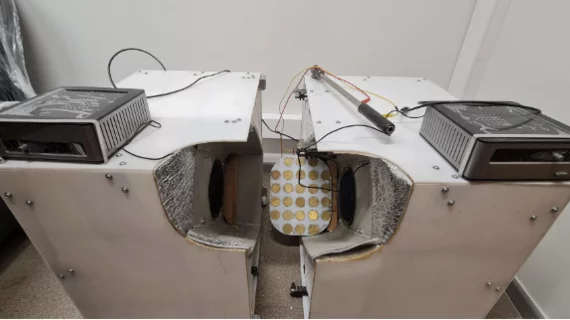Ultrasound device could be 'promising breakthrough' for treating diabetic neuropathy
A new ultrasound stimulation device has the potential to significantly improve issues with blood circulation in the lower extremities in individuals with diabetes.
Poor circulation of the lower leg is common to people who struggle with diabetes. The issue increases the risk of infections, ulcers, poor wound healing and loss of feeling, which in turn, raises the risk of falls. Up to one-third of people with diabetes will develop a foot ulcer in their lifetime, and up to 20% will require some form of amputation as a result.
Addressing circulation issues before they escalate in diabetics is critical. And even when diabetes is controlled, the damage it causes to nerves is long lasting. Many current treatment methods just treat the subsequent symptoms of deteriorating vascular health, rather than the root causes. Scientists in Lithuania are hoping to change that.
A team of researchers at from Kaunas University of Technology and the Lithuanian University of Health Sciences are working together to develop a device that will not just treat symptoms of neuropathy but improve blood flow throughout the lower extremities, particularly in the feet where diabetic ulcers are so problematic.
The ultrasonic device offers a noninvasive therapeutic option for stimulating blood flow throughout most of the leg. It uses piezoelectric elements to generate ultrasound waves that respond to an electrical signal, stimulating blood flow to the foot and beyond.
“Vibrations caused by electric current flowing through the elements create acoustic waves. The waves pass through the skin and enter the deeper tissues, where they cause vibrations and increase the tone in the walls of blood vessels. It helps to improve the blood flow in the superficial tissues and modulate the activity of blood-forming elements: erythrocytes, leukocytes, and thrombocytes,” Algimantas Bubulis, senior researcher at Kaunas University of Technology (KTU), explained in a release on the invention. “In this way, it is possible to regulate thrombogenesis, immune response, and inflammatory processes, which are essential for normal vascular and general tissue function.”
The device uses low frequency ultrasound, and its parameters can be adjusted to suit individual patients’ needs. Patients insert their lower limbs into the device to receive treatment, though it is non-contact and non-thermal.
The team involved in its development have been granted both Lithuanian and European patents. They are currently working on completing the commercial prototype, which can be used in hospitals, clinics, nursing homes and rehabilitation centers. Researchers plan to test the device for a variety of clinical applications, including improving the delivery of chemotherapeutics.
If successfully implemented, the team believes that the device could represent a “promising technological breakthrough in common medicine.”

